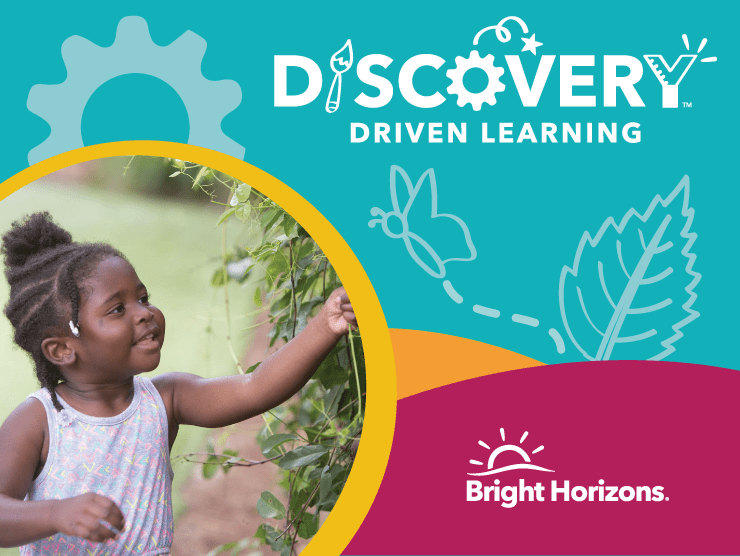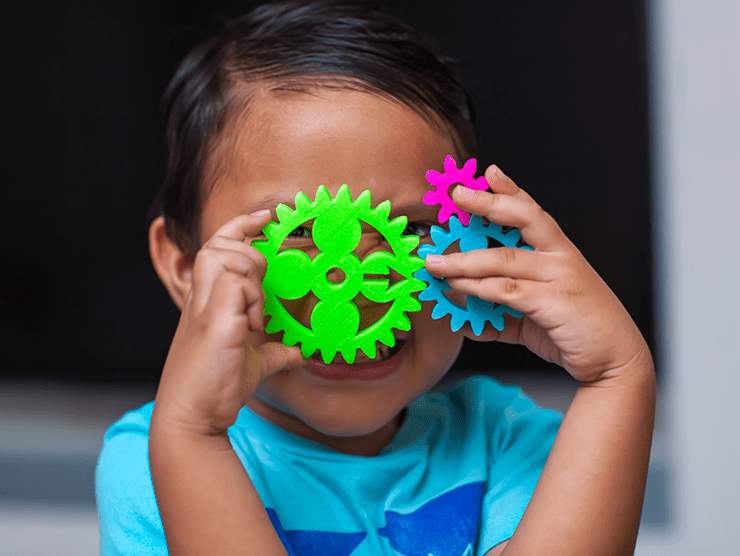Children learn through discovery, through the ability to pursue what they’re interested in, to wonder and explore, to be curious, and to investigate. And that’s why we named our framework for early care and education Discovery Driven Learning®.
This philosophy of early learning aligns with how brains and bodies grow and develop best (through immersive hands-on experiences), and it encourages important school and life skills, such as having a scientific mindset, creativity, problem-solving, self-confidence, social-emotional learning, self-awareness, and self-identity.
Take a look at Discovery Driven Learning in action!
Our infant environments are beautiful, peaceful spaces, where babies are allowed the opportunity for free movement. Our curriculum plans for infants have many opportunities for engagement with sensory materials, connection with a trusted adult, and we also spend time focusing on serve and return conversations with each infant multiple times a day. Through responsive and nurturing relationships (one of the four cornerstones of Discovery Driven Learning), babies learn that the world is a safe place in which they have value. Every moment — from looking at books together to snuggling during a feeding — becomes an opportunity to make connections and strengthen trust.
In preschool, the teachers in this classroom set flowers out on the table and asked the children for ideas on what to do with them. The younger children were very interested in the sensory aspects of the project, while the older children tended to focus more intently on observing and drawing the flowers. They were all very proud of their work and talked about how their paintings and drawings were different and unique, even though the flowers were all the same. This experience offers many opportunities for playful learning, problem-solving, exploring possibilities, and personalization — all part of Discovery Driven Learning Proven Instructional Method.
After a classroom conversation about bugs in a kindergarten prep room, two children take delight in observing the habitat and movement of bugs in the outdoor environment. Through the Discovery Driven Learning approach, the children work through the scientific method as they ask questions, make a hypothesis, and take note of their observations of nature. The children gain critical scientific thinking skills through observation of the environment, asking questions, having meaningful conversations, and categorizing objects and bugs.
Nurturing and Responsive Relationships, one of Discovery Driven Learning’s four cornerstones, gives children the safety to ask questions, explore, and make discoveries. Teachers build these relationships when they express encouragement and curiosity. The teacher listened to the children’s ideas and questions and created an environment to sustain the learning and curiosity outdoors.
In all of our classrooms, Discovery Driven Learning is guided by children’s innate desire to learn about themselves and the world around them — and that results in exciting revelations. It puts the child first, ensuring their sense of wonder, natural curiosity, rich imaginations, and drive to discover — it’s at the heart of all we do.








